Birds & Mammals
INDO-MALAYAN Freshwater
Family Anatidae: Ducks & Geese
Family Rallidae: Rails, Gallinules, Coots
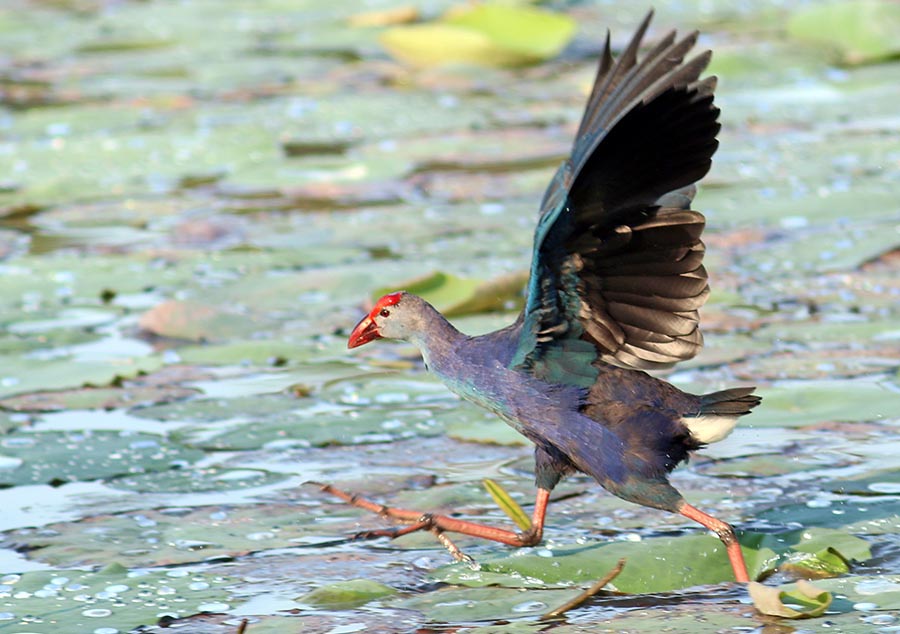 you try running with feet this big!
you try running with feet this big!Porphyrio poliocephalus, 'Grey-headed (Purple) Swamphen'. This is the Purple Swamphen found in waterways in the middle east, India and across the south-east Asian mainland. Porphyrio indicus 'Black-backed Swamphen' is the equivalent purple swamphen species of the Indonesian islands.
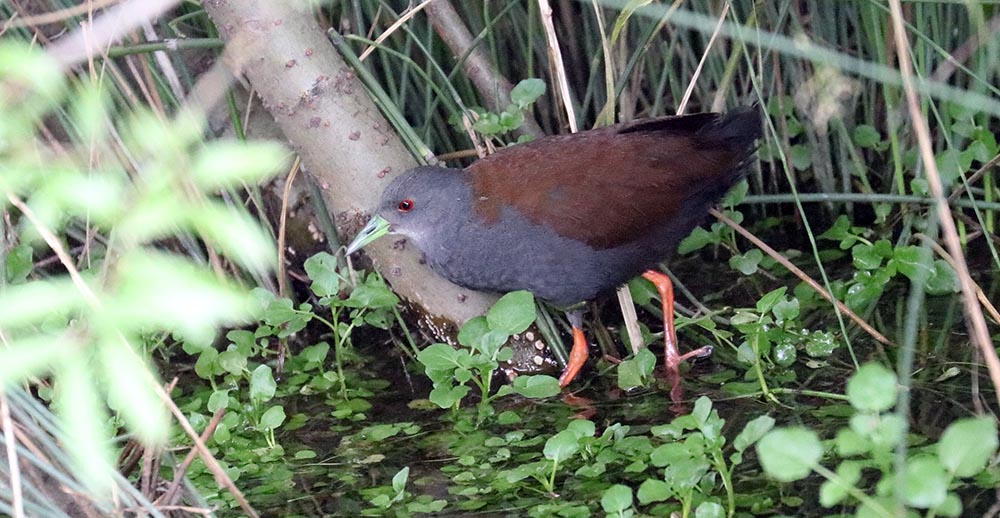 (Paro, Bhutan)
(Paro, Bhutan)Porzana bicolor, 'Black-tailed Crake'.
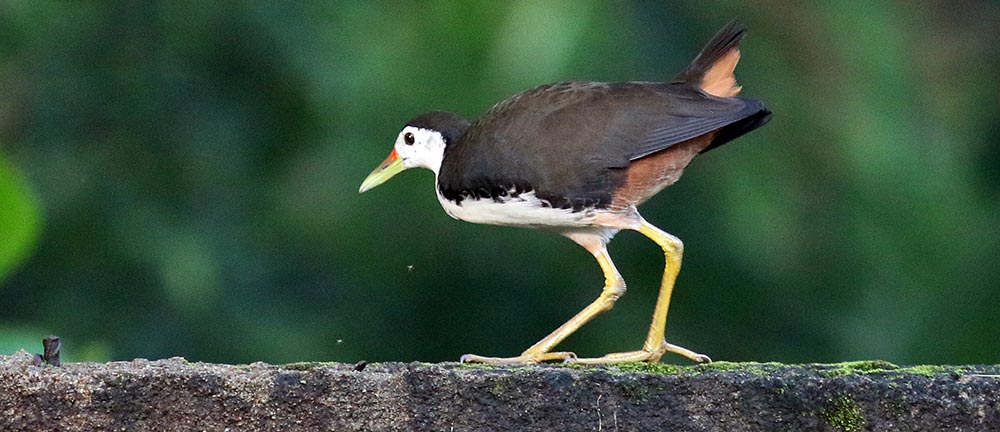
Amaurornis phoenicurus, 'White-breasted Waterhen'. Found near fresh waterways from middle east, through India, and all of south-east Asia.
Family Burhinidae: Thick-knees
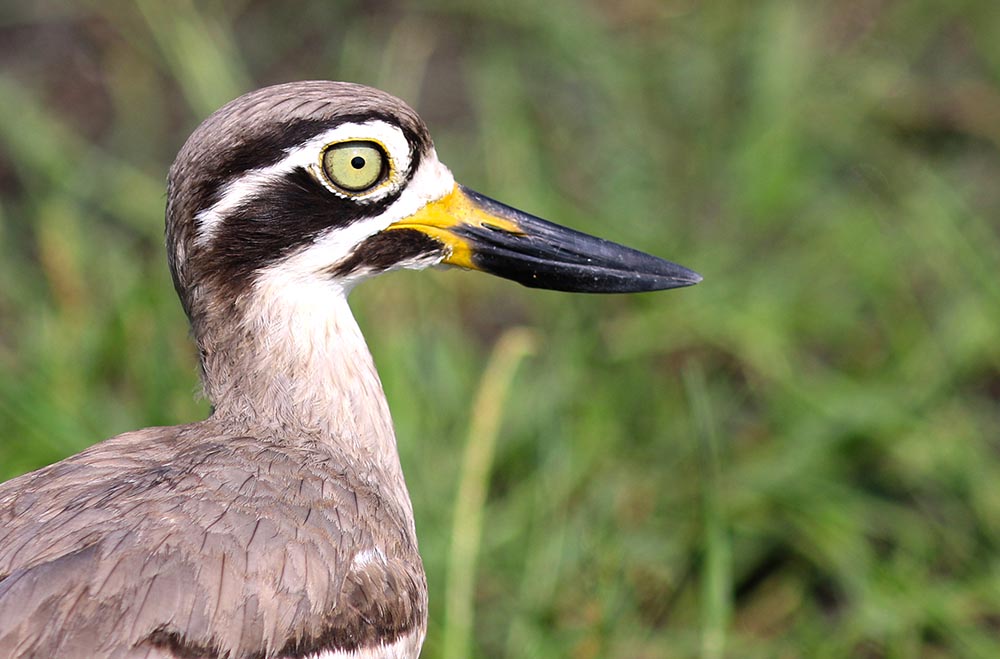 (Bundala, Sri Lanka)
(Bundala, Sri Lanka)Esacus recurvirostris, 'Great Thick-knee'. Widespread in wetland across tropical Asia.
Family Recurvirostridae: Stilts & Avocets
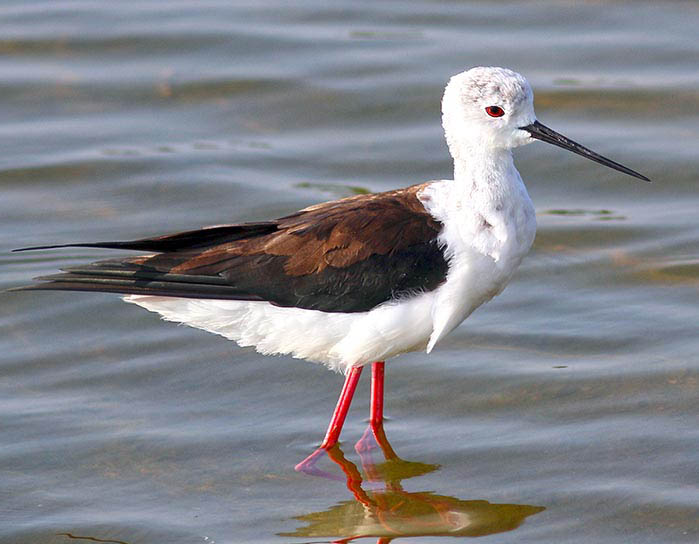 (Yala National Park, Sri Lanka) (Yala National Park, Sri Lanka) |
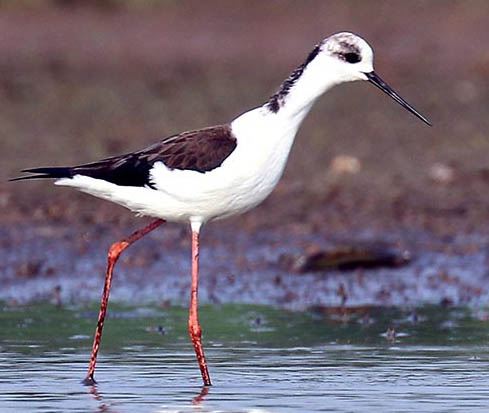 (Prek Toal, Cambodia) (Prek Toal, Cambodia) |
Himantopus himantopus, 'Black-winged Stilt'. Found in water habitats throughout warmer parts of the world.
Family Ibidorhynchidae: Ibisbill
There is only one species in this family.
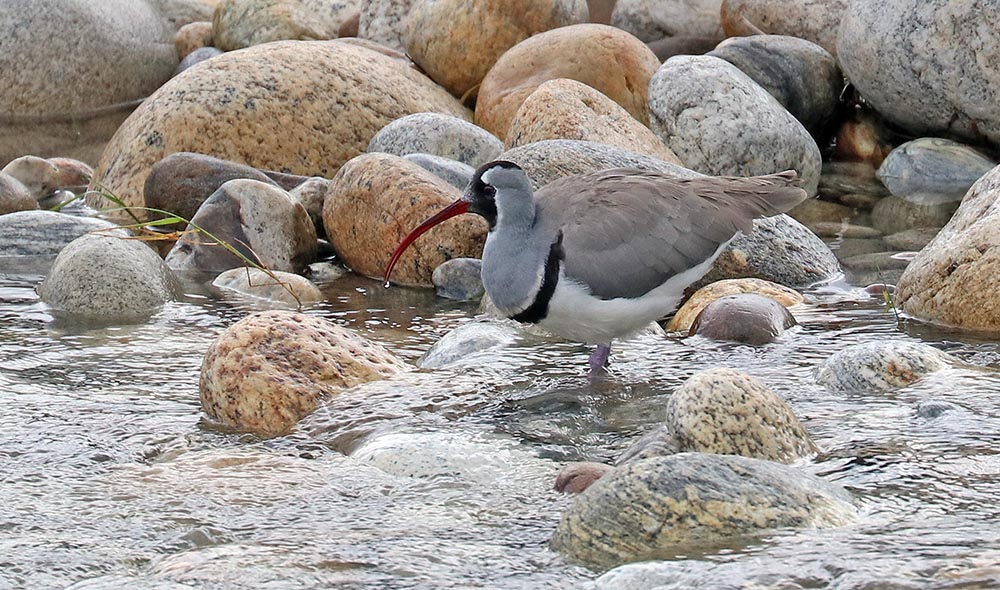 (Bhutan)
(Bhutan)Ibidorhyncha struthersii, 'Ibisbill'. A rare bird found only on shingle river banks in high altitude Asia.
Family Charadriidae: Plovers, Dotterels
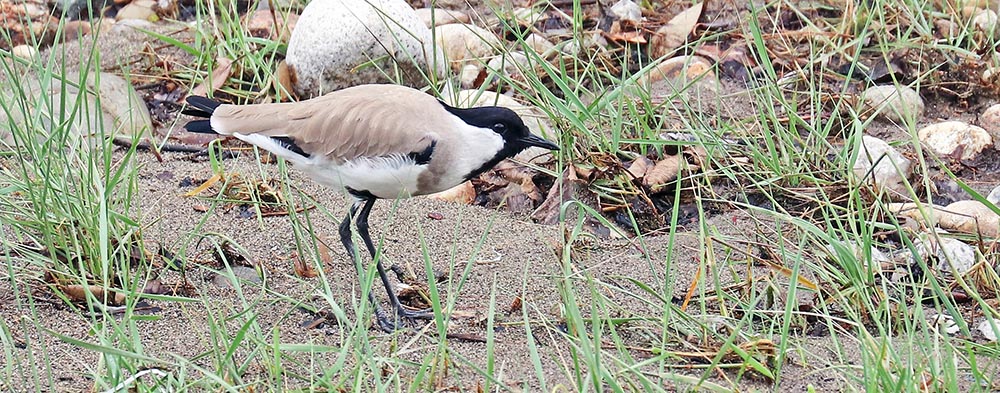 (Bhutan)
(Bhutan)Vanellus duvaucelii, 'River Lapwing'.
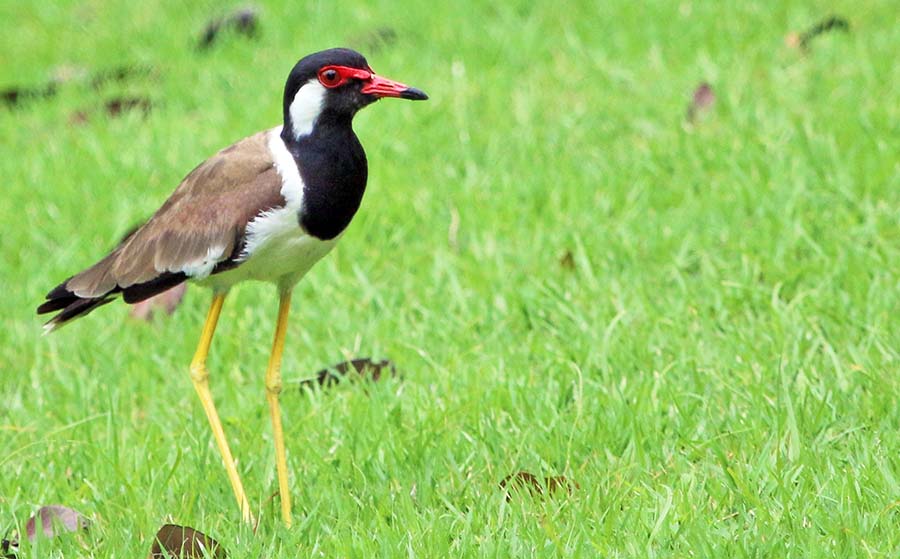
Vanellus indicus, 'Red-wattled Lapwing' (Samarn Bird camp, Thailand). Found mainland south-east Asia, through India to middle-east.
Family Scolopacidae: Sandpipers, Snipes
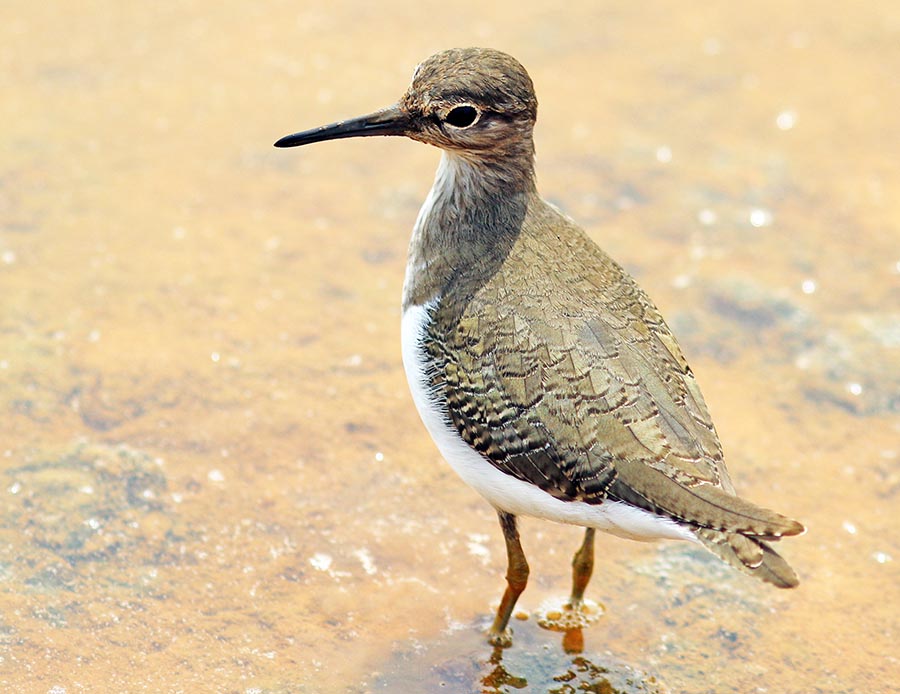 (Yala, Sri Lanka)
(Yala, Sri Lanka)Family Laridae: Gulls and Terns
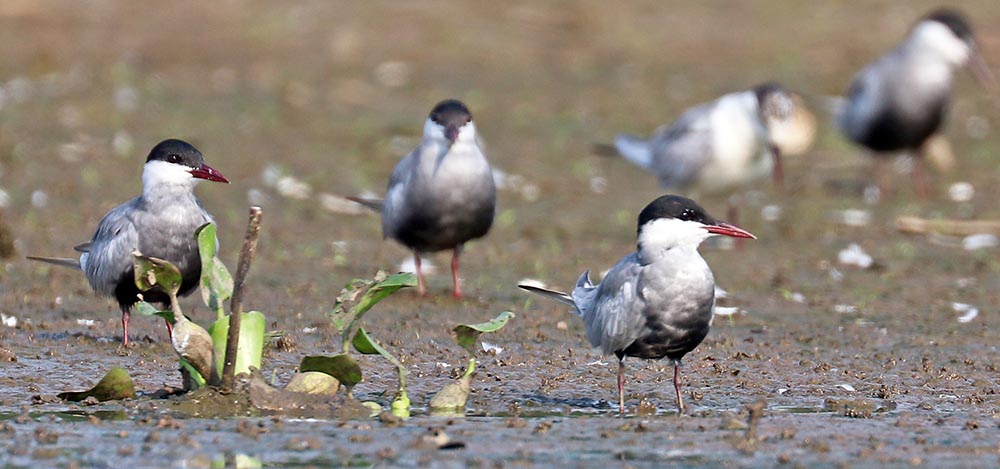 (Prek Toal, Cambodia)
(Prek Toal, Cambodia)Chlidonias hybrida, 'Whiskered Tern'. Found throughout old world tropics.
Family Ciconiidae: Storks
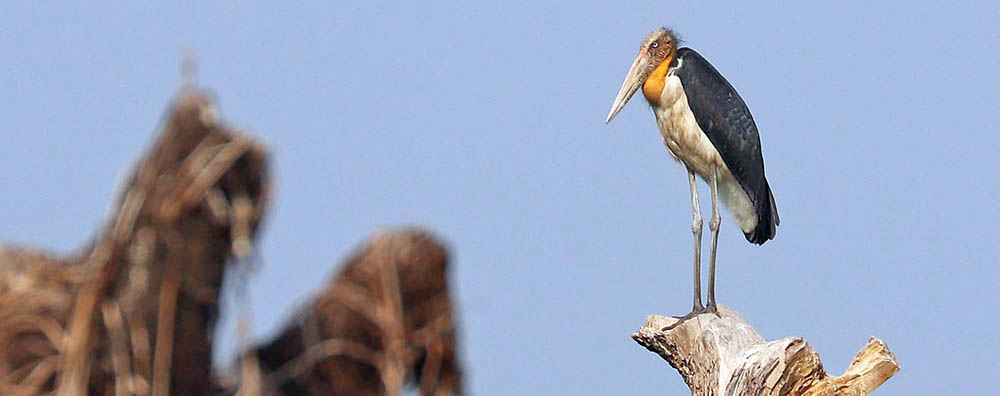 (Prek Toal, Cambodia)
(Prek Toal, Cambodia)With their long legs, storks look superficially like herons, however, they are no longer considered closely related. Those long legs are used to wade through the aquatic habitats in which most species dwell. There, they hunt mostly for small animals such as insects, molluscs, fish, frogs, reptiles and mammals. They are often tall, and include some of the largest of all flying birds. Many species build huge nests, which may be used season after season. Their communication often includes loud and comical bill clapping.
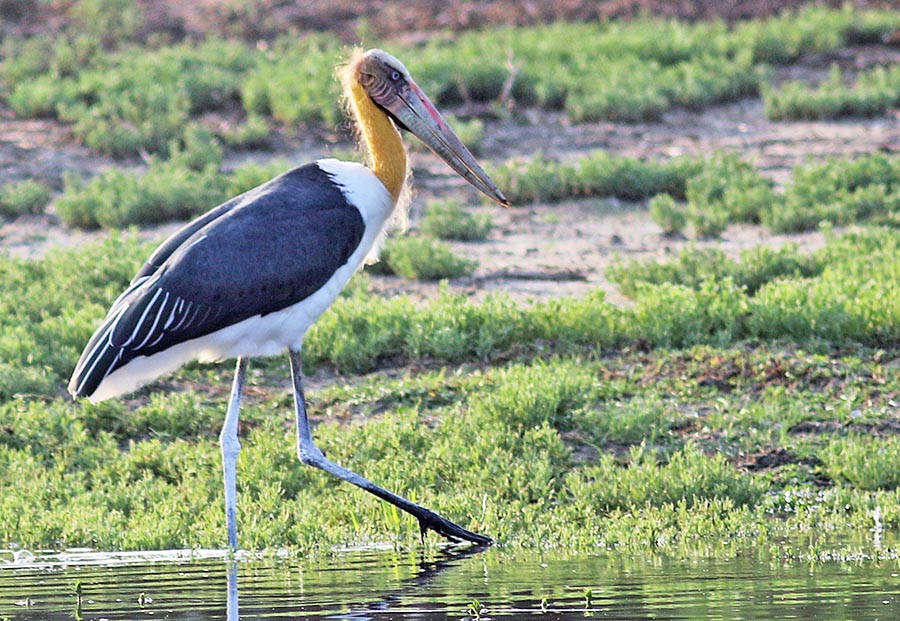 (Bundala, Sri Lanka)
(Bundala, Sri Lanka)Leptoptilos javanicus, 'Lesser Adjutant Stork'. Common than the closely related Greater Adjutant, and told apart by this species having more complete black on wing and red on face, and no large red neck lump.
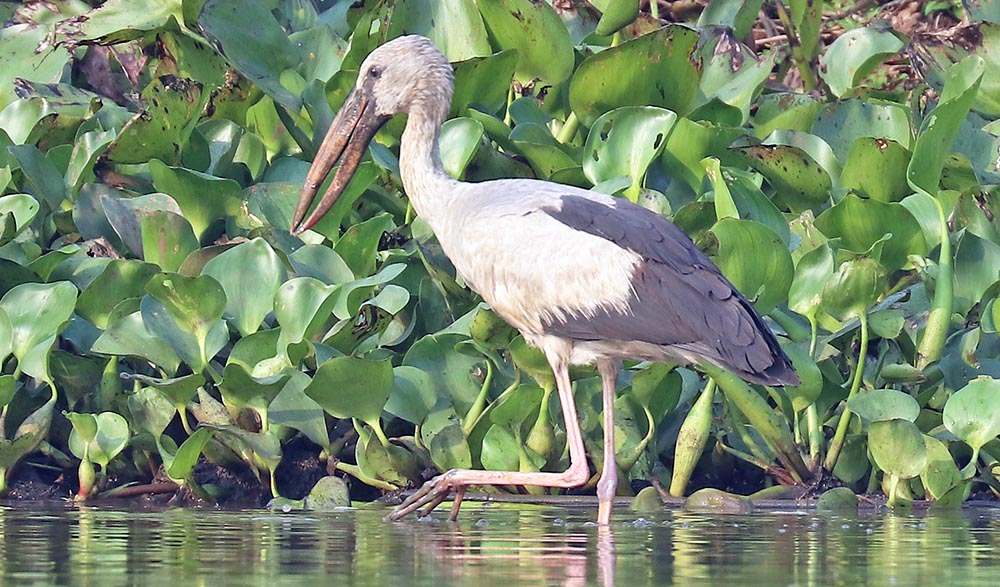 (Prek Toal, Cambodia)
(Prek Toal, Cambodia)Anastomus oscitans, 'Asian Openbill Stork'. The bizarre bill with the gap when closed has evolved to feed specifically on molluscs.
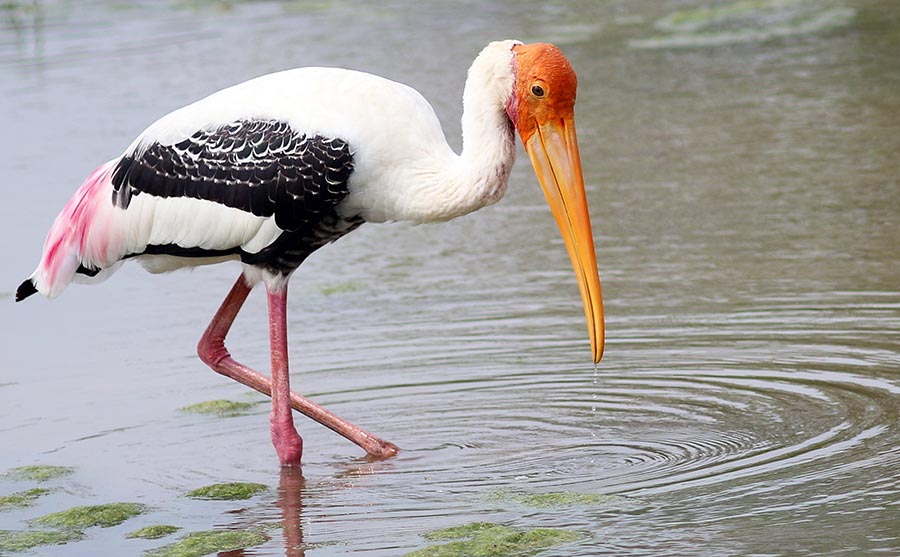 Painted Stork, (Yala National Park, Sri Lanka)
Painted Stork, (Yala National Park, Sri Lanka)Mycteria leucocephala, 'Painted Stork'. Colourful stork, with a bill that curves at the end. Found in freshwater wetlands in India and through to the south-east Asian mainland.
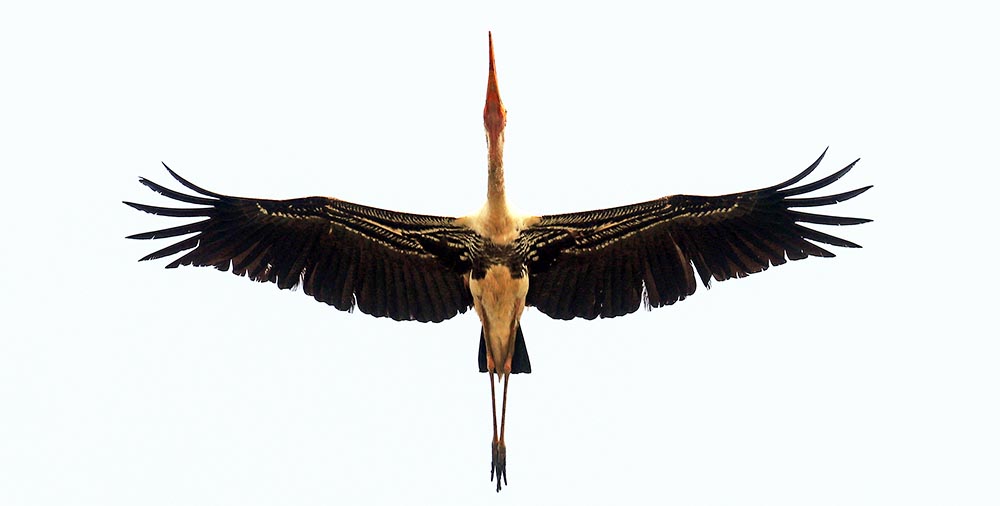 Painted Stork in flight, (Prek Toal, Cambodia)
Painted Stork in flight, (Prek Toal, Cambodia)Family Phalacrocoracidae: Cormorants
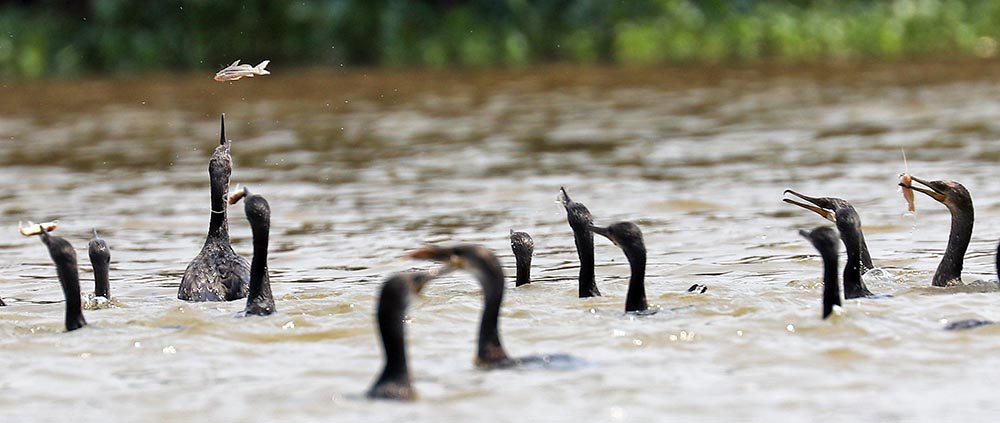
Cormorants feed on fish, including catfish and eels. They hunt by propelling themselves along underwater with their large webbed feet.
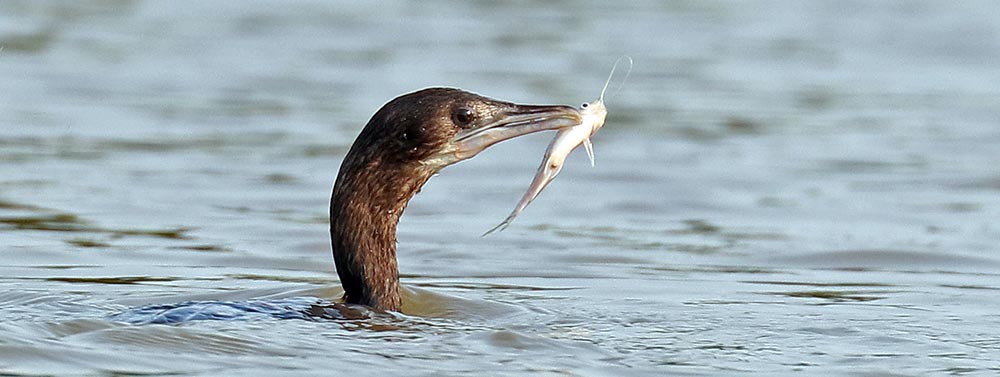
Cormorants have long thin bills with a sharp tip, which is often used to impale their prey, such as the catfish pictured.
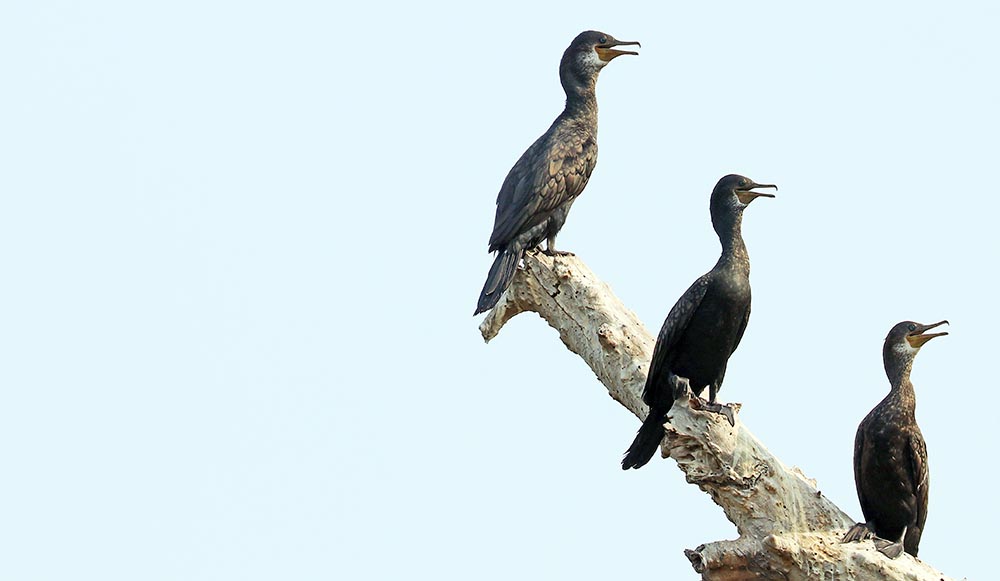 (Prek Toal, Cambodia)
(Prek Toal, Cambodia)Phalacrocorax fuscicollis, 'Indian Cormorant'. Throughout India and some of the southern south-east Asian mainland.
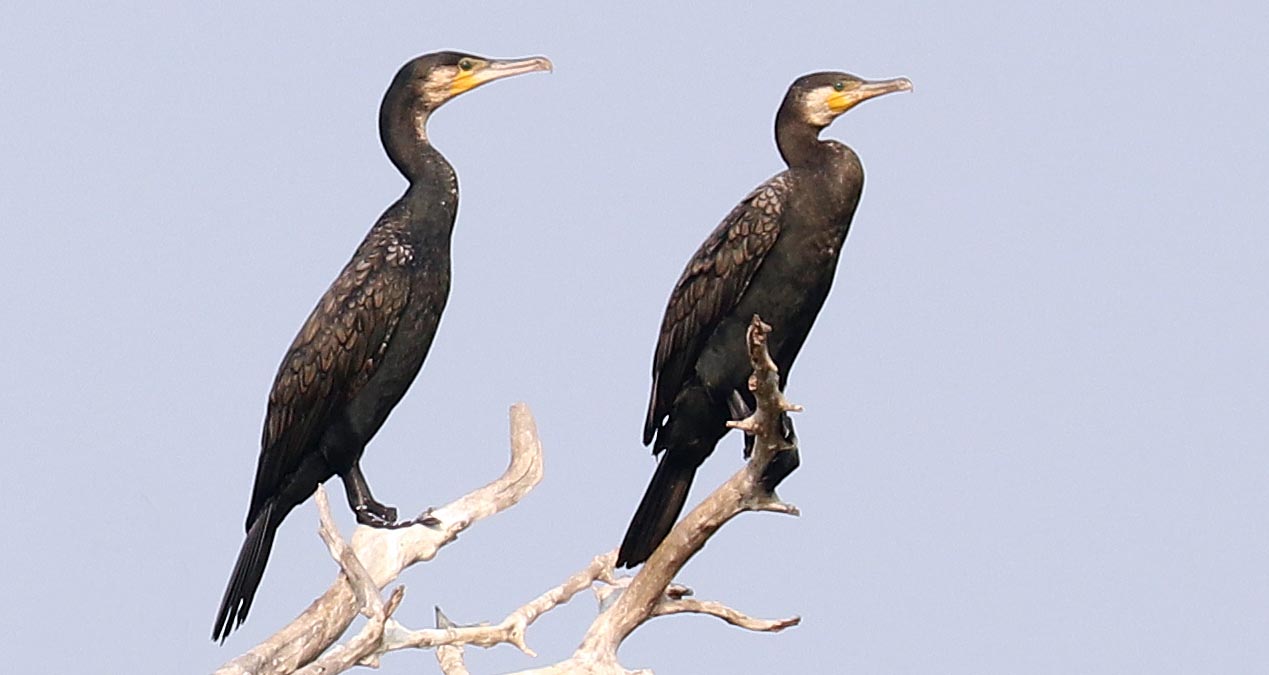 (Prek Toal, Cambodia)
(Prek Toal, Cambodia)Phalacrocorax carbo, 'Great Cormorant'. Found around much of the wamer parts of the world.
Family Threskiornithidae: Ibises, Spoonbills
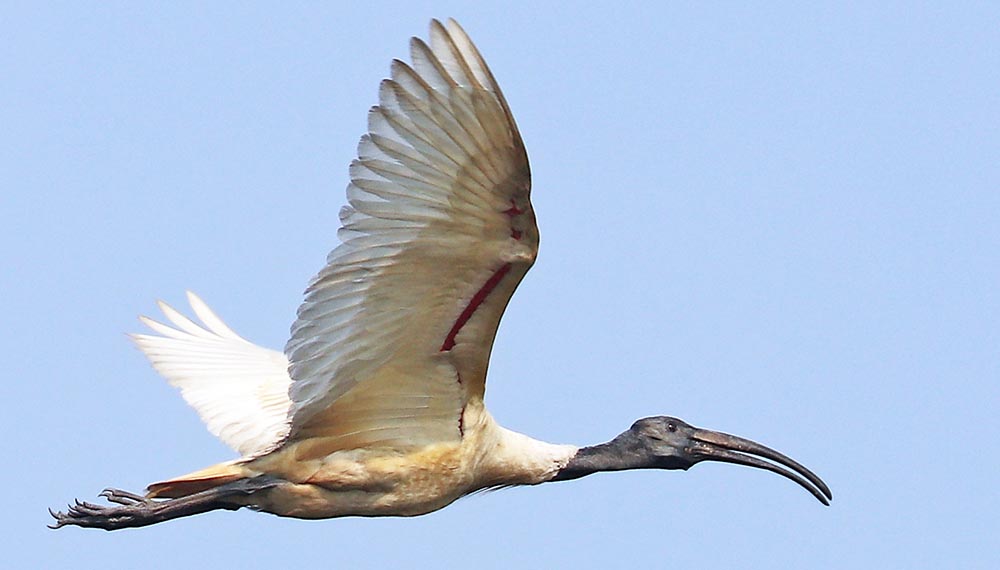
Threskiornis melanocephalus, 'Black-headed Ibis'. Found throughout India and some of the southern south-east Asian mainland.
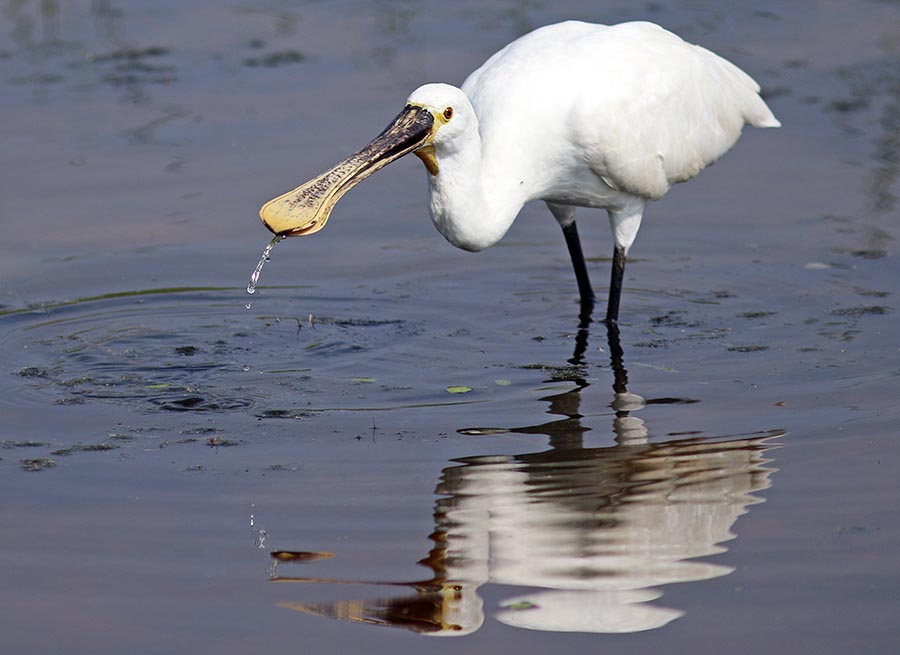 (Bundala, Sri Lanka)
(Bundala, Sri Lanka)Platalea leucorodia, 'Eurasian/Common Spoonbill'.
Family Pelecanidae: Pelicans
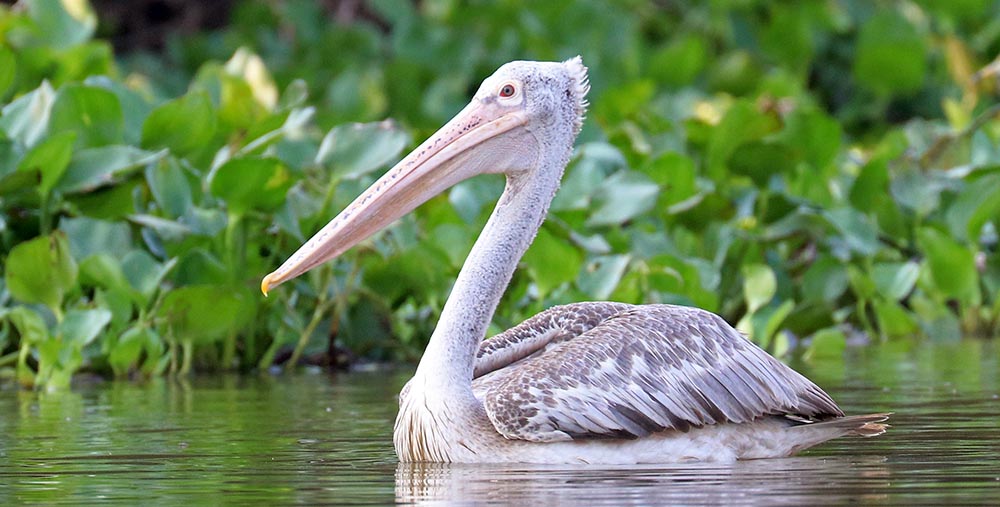 (Prek Toal, Cambodia)
(Prek Toal, Cambodia)Pelecanus philippensis, 'Spot-billed Pelican'.
Family Ardeidae: Herons, Egrets, Bitterns
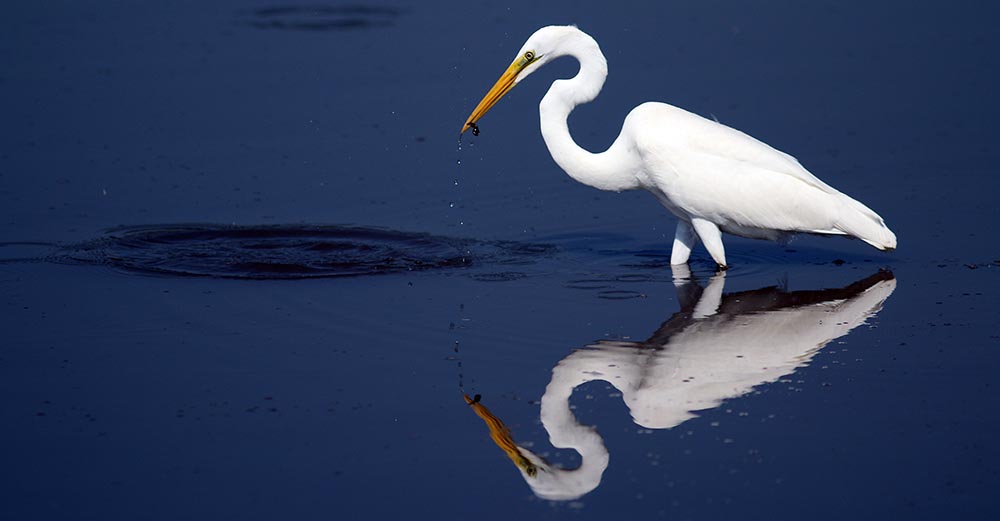 Great Egret (Udawalawa National Park, Sri Lanka)
Great Egret (Udawalawa National Park, Sri Lanka)All the birds in this family are Herons, with the white ones with plumes often being specifically referred to as 'egrets', however, these common names are often interchangeable. I call them the 'supermodels' of the bird world, strutting around with a slim build and long legs. They also have long sharp bills, which they use to jab and grab at their prey, which is mostly fish, frogs, and underwater invertebrates. The taller species have a neck that is usually long and kinked, and this fulcrum enables the head and bill to be snapped forward quickly.
Herons are one of the most obvious bird in tropical Asian wetlands. They are also one of the most adaptable groups, as many species can also be found in the human-managed rice-fields that now dominate the tropical Asian landscapes.
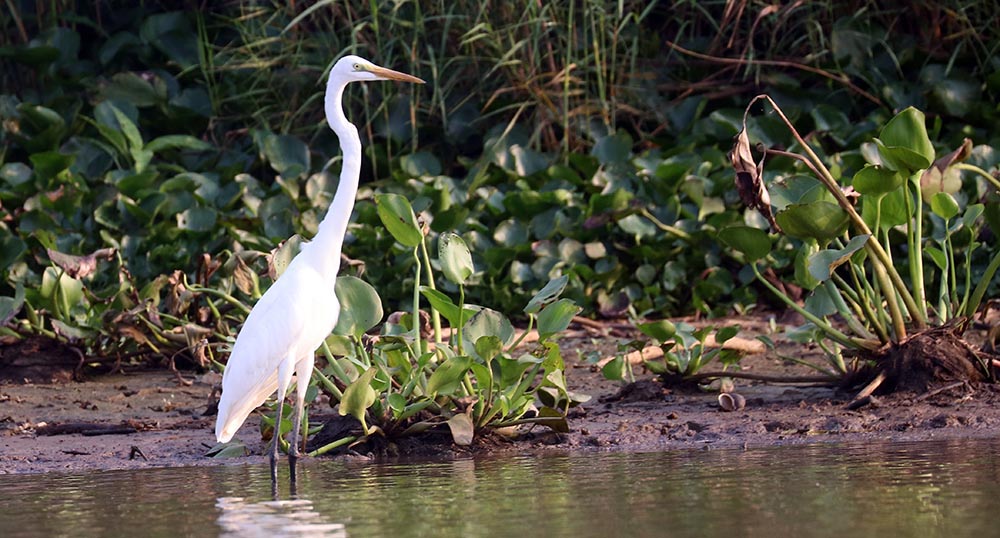
Ardea alba, 'Great Egret'. The largest white heron. Found around much of the world.
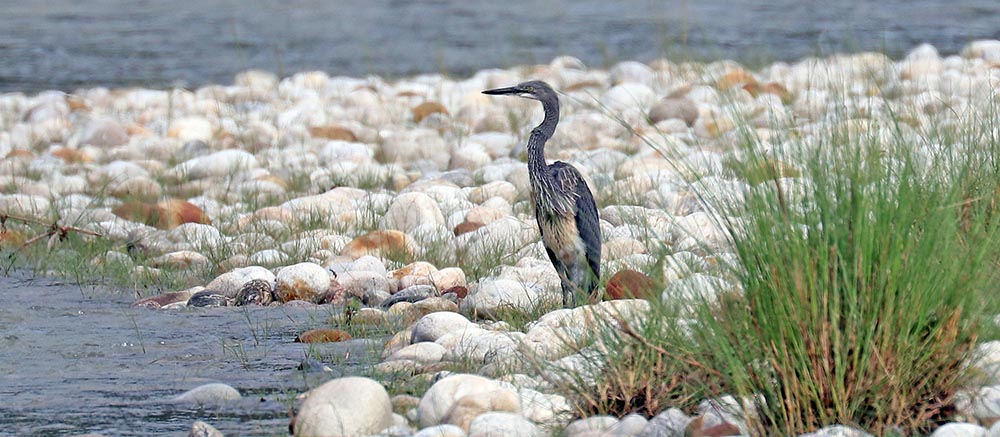 (Bhutan)
(Bhutan)Ardea insignis, 'White-bellied Heron'. This is a very rare bird, close to extinction. There are thought to be only about 250 individuals left.
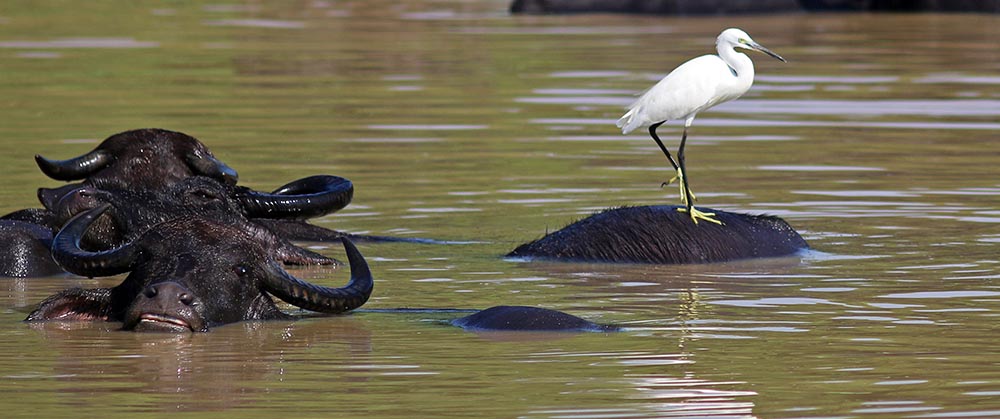 Little Egret (Udawalawa National Park, Sri Lanka).
Little Egret (Udawalawa National Park, Sri Lanka).Egretta garzetta, 'Little Egret'. Similar but smaller than Great & Intermediate Egrets. Similar but slimmer than Cattle Egret. Often has yellow feet, cute 'yellow slippers'. Found in wet areas throughout Old World tropics of Africa, Asia & Australasia.
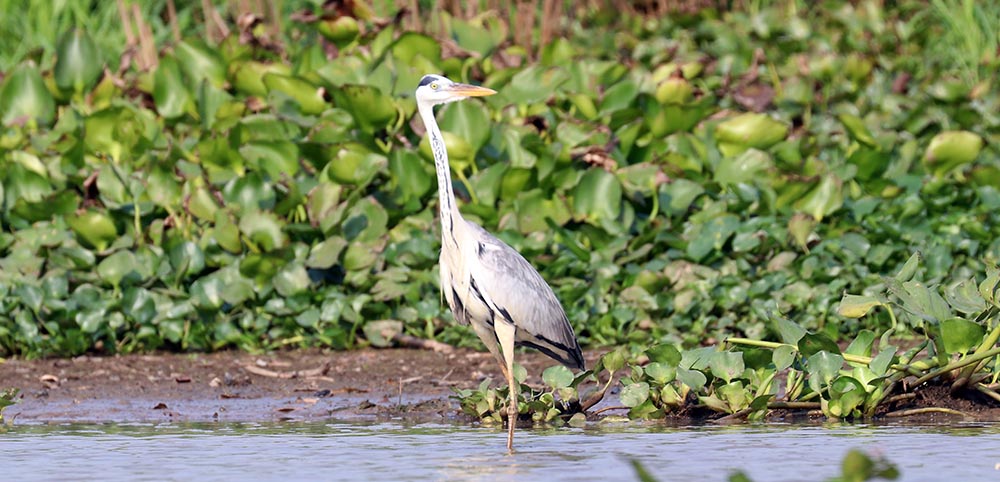 (Prek Toal, Cambodia)
(Prek Toal, Cambodia)Ardea cinerea, 'Grey Heron'.. Found throughout Europe, Africa & Asia.
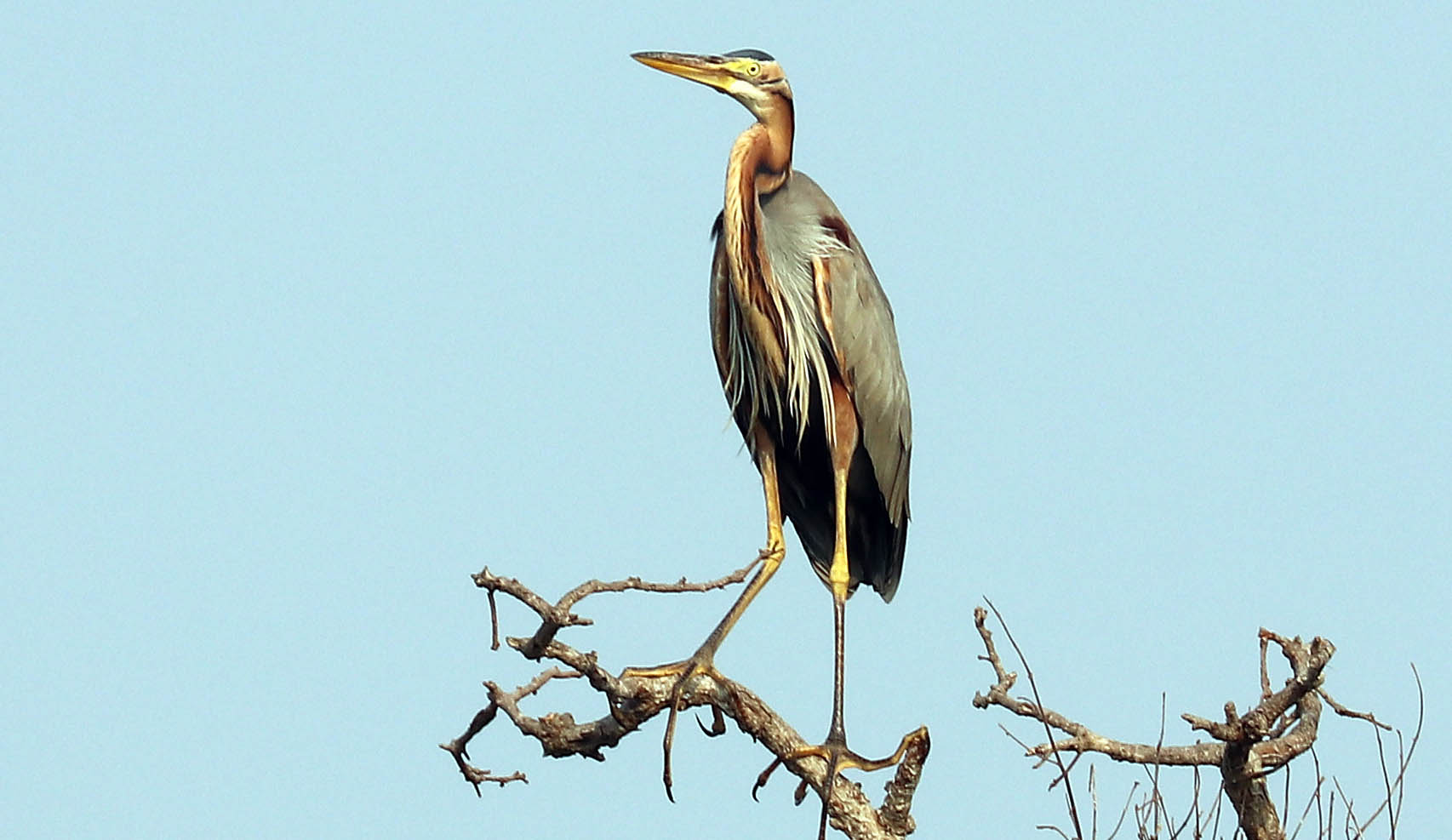 (Prek Toal, Cambodia)
(Prek Toal, Cambodia)Ardea purpurea, 'Purple Heron'. Found throughout Europe, Africa & Asia.
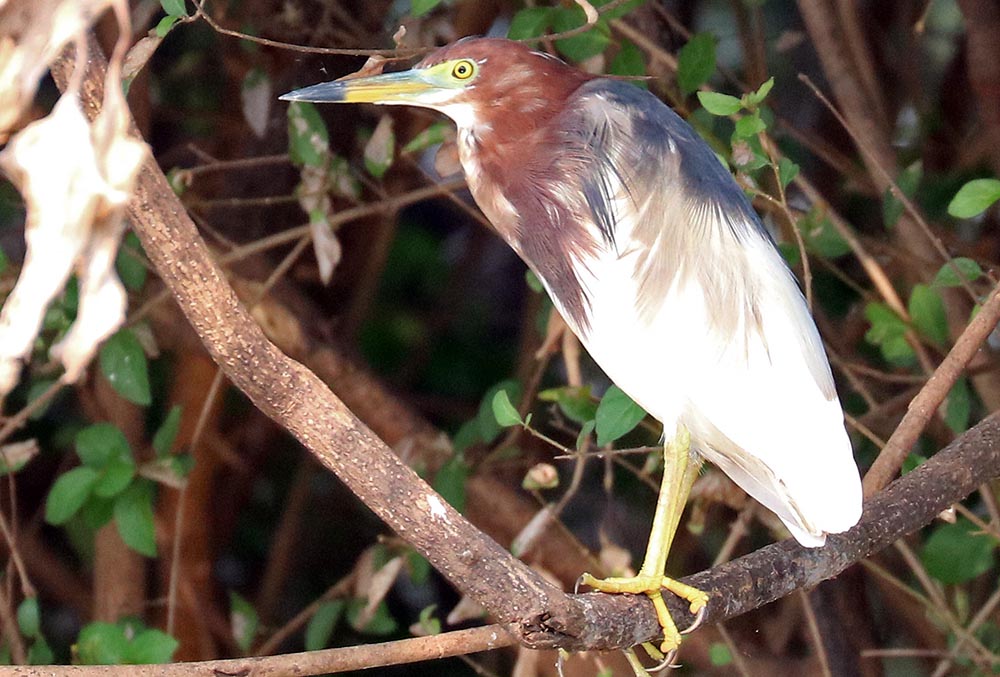 (Prek Toal, Cambodia)
(Prek Toal, Cambodia)Ardeola bacchus, 'Chinese Pond Heron'. Found throughout mainland south-east Asia.
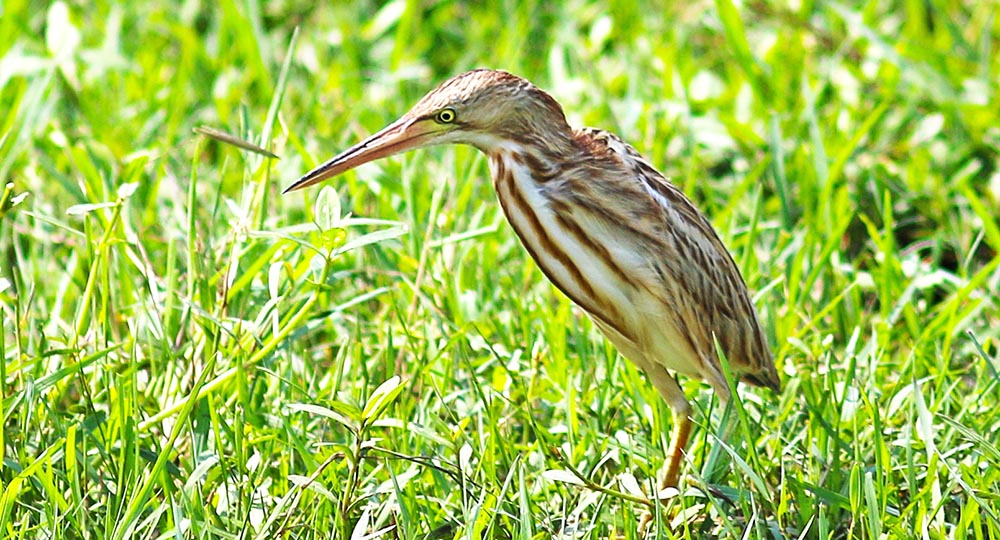 (Bundala, Sri Lanka)
(Bundala, Sri Lanka)Ixobrychus sinensis, 'Yellow/Chinese Little Bittern'.
Family Accipitridae: Hawks, Kites, Eagles
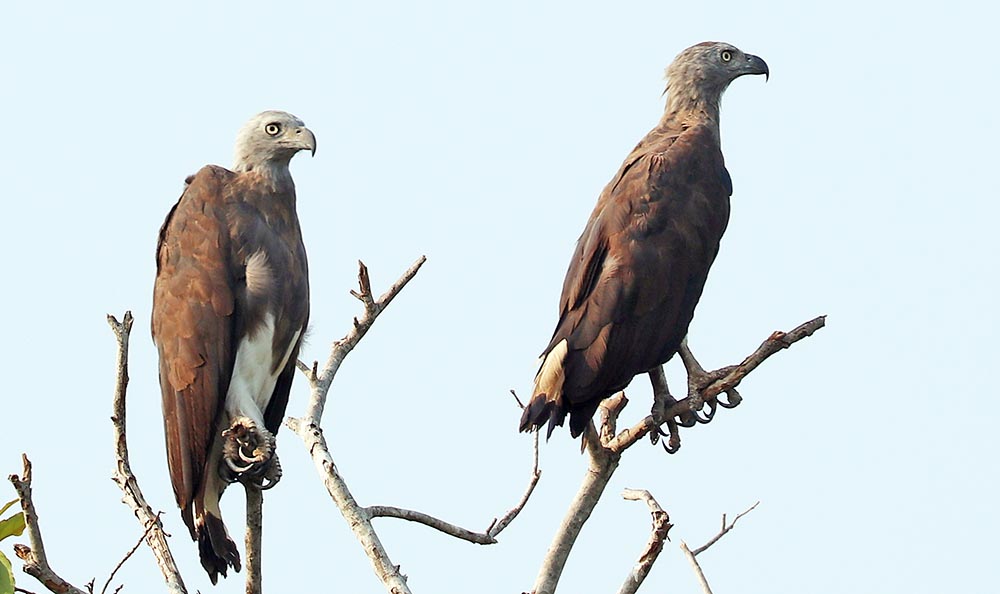 (Prek Toal, Cambodia)
(Prek Toal, Cambodia)Haliaeetus ichthyaetus, 'Grey-headed Fishing Eagle'. Found throughout much of tropical Asia.
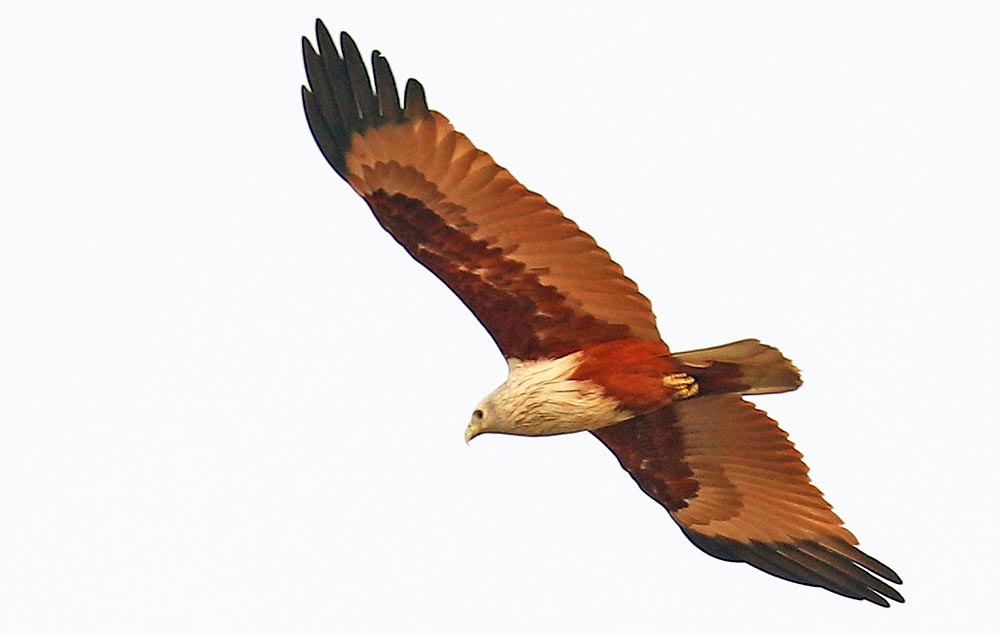 (Prek Toal, Cambodia)
(Prek Toal, Cambodia)Haliastur indus, 'Brahminy Kite'. Found throughout tropical Asia and northern Australasia.
Family Alcedinidae: Kingfishers
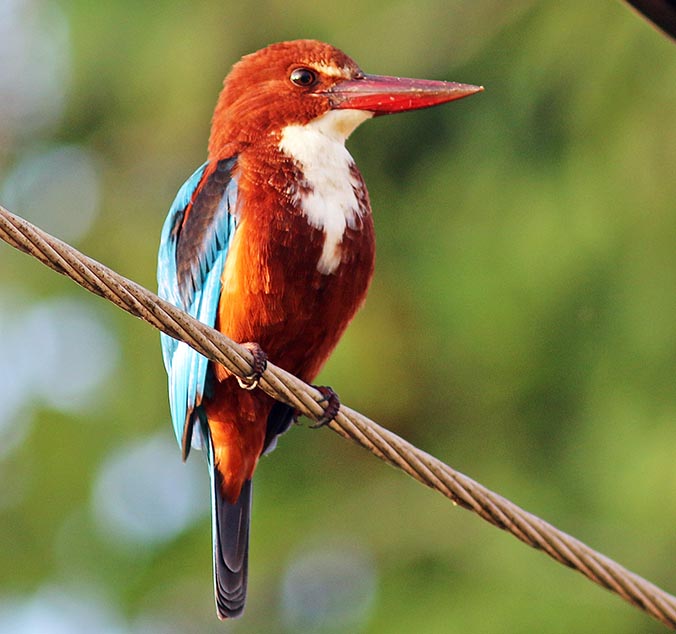 (Talangama wetlands, Sri Lanka)
(Talangama wetlands, Sri Lanka)Halcyon smyrnensis, 'White-throated/breasted Kingfisher'. Found near water and around small settlements, from middle east across Asia to Bali. Often seen perched on wires.
Family Acrocephalidae
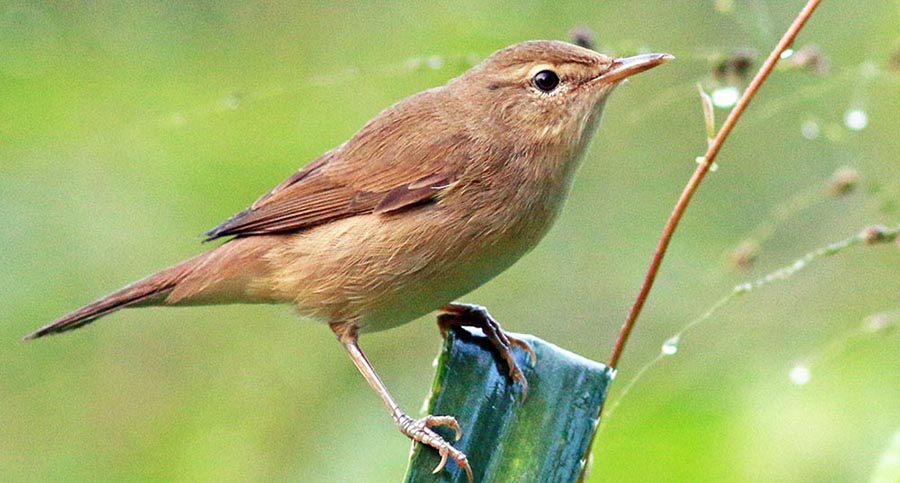
Acrocephalus stentoreus, 'Clamorous/Indian Reed Warbler'. Found around reed beds on lakes and rivers, from Egypt, east through tropical Asia and south to Australia.
Class Mammalia
Order Cetartiodactyla: Even-toed Ungulates and Cetacea
Family Bovidae
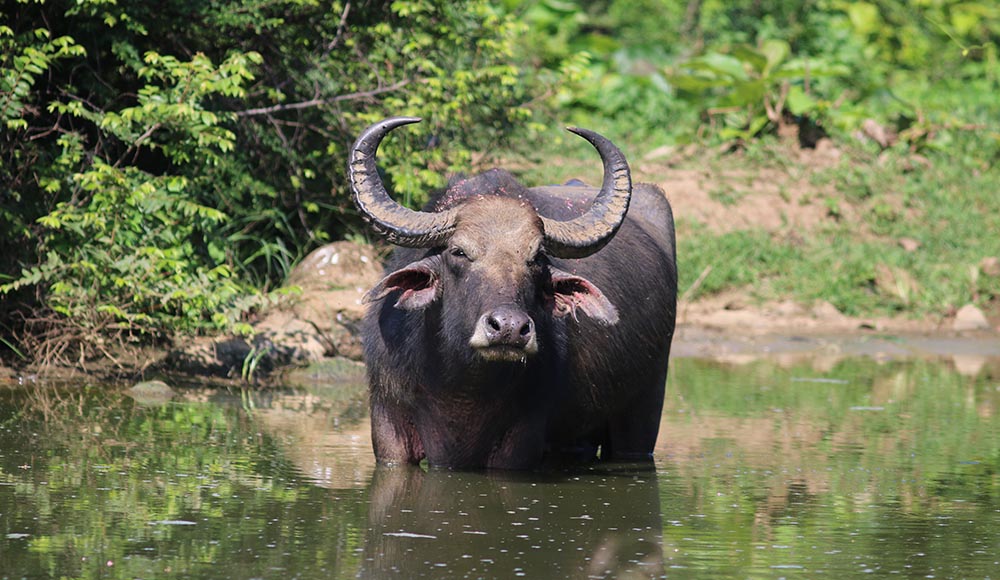 (Udawelawa, Sri Lanka)
(Udawelawa, Sri Lanka)Bubalus bubalis, '(Domestic) Water Buffalo'. This is the buffalo seen in rice fields all over Asia. There are many wild populations of feral water buffalo through tropical Asia, as well as introductions in Africa and Australasia. (It is presumed to be derived from the wild species Bubalus arnee, which has been reduced to small populations in Asia, mostly in India).
Order Artiodactyla
Family Suidae
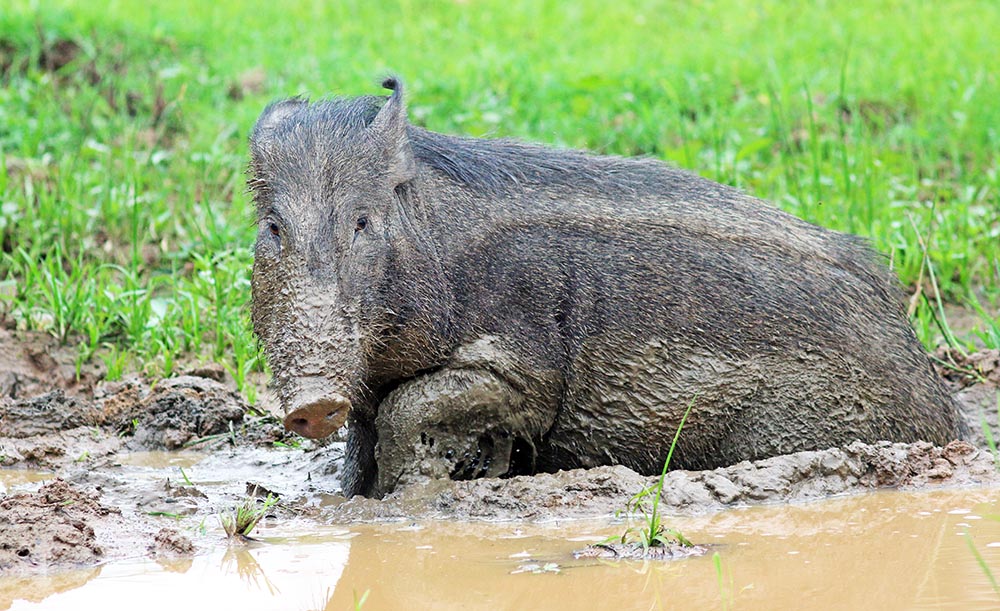 (Yala National Park, Sri Lanka)
(Yala National Park, Sri Lanka)Sus scrofa, 'Wild Boar/Pig'. Widespread throughout Eurasia, tropical Asia, and northern Africa, introduced into the Americas, Australasia and Pacific islands.